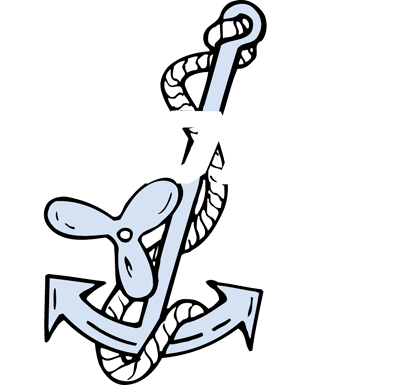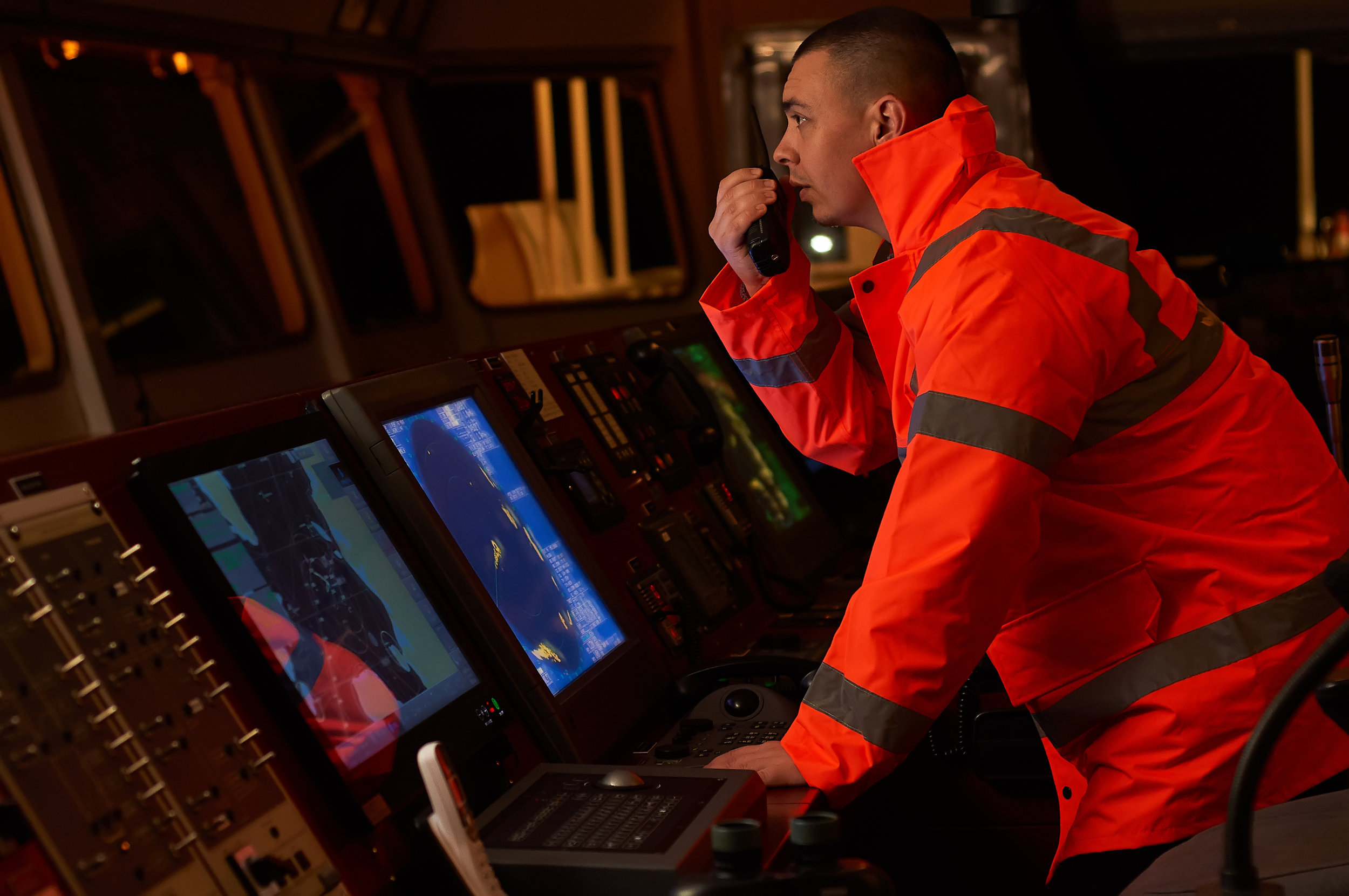The Tug Le Cheval Rouge towing the Tug Nathan E Stewart and Barge DBL-55 on 12/19/2011. Photo Credit: US Coast Guard.
The Transportation Safety Board of Canada’s (TSB) recently-released investigation report into the October 2016 grounding and sinking of the American tug Nathan E. Stewart near Bella Bella, British Columbia cites fatigue as the main factor contributing to the incident.
Of course, the issue of fatigue among shipmasters and crewmen is not a new one. According to Fatigue & Maritime Operations, many notorious maritime accidents, including the grounding of the Exxon Valdez in Alaska’s Prince Edward Sound in March 1989, have been caused by fatigue. The adoption of hours of work and rest regulations, and the development of codes and guidelines in recent years have helped to mitigate the risk. However, the latest findings by Canadian safety officials further underline the need to effectively and reliably manage the risk of fatigue in the maritime industry.
Nathan E Stewart, shortly after being hoisted by the heavy-lift floating crane D.B. General. (Photo by Kirby Offshore Marine)
“The investigation determined that the second mate who, contrary to Canadian regulations, was keeping watch alone on the bridge at the time of the accident, had fallen asleep and missed a planned course change. For more than two days, he had been working a six-on, six-off shift schedule, alternating six hours of duty and six hours of rest. This schedule presents a number of challenges which have been well documented by various studies and experts internationally, notably the difficulty in obtaining sufficient restorative rest during the off-duty periods. There was no prior discussion with the master on the second mate's preparedness for the watch, and the watchkeeper wasn't aware of the sleep-conducive conditions he was facing on the bridge that night.”
Excerpted from the Transportation Safety Board of Canada (TSB) news release.
What’s The Problem?
According to the 2016 Project Martha study conducted by InterManager, the increasing level of fatigue among mariners is closely related to the stress and intellectual challenges inherent in their profession, particularly among masters and watchkeepers. Shipping, like other transportation industries – rail, aviation, commercial road transport – is a 24-hour, 7 days a week operation, meaning seafarers typically have to work long hours across long periods of time. Furthermore, the operational aspects of shipping, such as trading patterns, length of sea passage, port-rotation, and the brief time ships remain in port leave little or no time for mariners to get recuperative rest.
One way vessel operators can help reduce their mariners' fatigue is by ensuring they are relieved on schedule. “If a seafarer is told he or she will be at sea for two months, they are fine, but if you tell them at two months, ‘We can’t actually relieve you now,’ that’s when motivation plummets and fatigue worsens,” said Capt. Kuba Szymanski, secretary-general of InterManager. “The shore staff needs to think of better ways of arranging crew relief.”
Crewmembers in the Project Martha study said that top factors contributing to fatigue were job security and demands, irregular work hours, harsh environmental issues, poor sleep quality, lack of rest hours, as well as keeping pace with new technology and regulations on board. Poor eating habits, imperfect sleeping conditions, social isolation, and working and living away from home for many months at a time with no clear separation between work and recreation, also increases the potential for fatigue.
When fatigued, most aspects of human performance suffer including judgment/decision making, thinking and information processing, memory, reaction time and concentration. Extreme fatigue can cause an uncontrolled and involuntary shutdown of the brain. This means, regardless of motivation, experience or skill, a fatigued person can lapse into sleep at any time, even at the wheel of a ship, putting the lives of everyone onboard, millions of dollars of company assets, and the environment in serious jeopardy. As a result, all mariners need to be aware of how to protect themselves, both physically and mentally, to avoid fatigue.
"There is a compelling need for vessel operators and watchkeepers to recognize and to address the factors that contribute to fatigue," said Kathy Fox, chairwoman of the TSB. "If watchkeepers have a better understanding of those factors, and the actions they can take to reduce the risks, then we should see a reduction in the number of fatigue-related occurrences in the marine industry.”
So What Can You Do?
An important step in combating fatigue is to realize your body’s limitations and recognize the signs of fatigue. Be sure to communicate to your supervisor if you think fatigue may be impairing your performance or the performance of other crewmembers. Some of the warning signs of fatigue include:
Inability to stay awake (head nodding or falling asleep against your will)
Difficulty with eye-hand coordination skills (such as switch selection)
Speech difficulties (slurred, slowed or garbled)
Heaviness in the arms and legs or sluggish feeling
Decreased ability to exert force while lifting, pushing or pulling
Increased frequency of dropping objects like tools or parts
Headaches, giddiness
Heart palpitations, rapid breathing
Loss of appetite
Insomnia
Sudden sweating fits
Leg pains or cramps
Anxiety/needless worry
Increased mood changes (irritability, tiredness and depression)
Poor judgment of distance, speed, time, etc.
Slow or no response to normal, abnormal or emergency situations
Reduced attention span, difficulty concentrating, inability to pay attention
Fortunately, there are a number of steps that professional mariners can take to help mitigate fatigue:
Try to get long periods of uninterrupted sleep, especially before you expect long hours (7 to 9 hours of sleep is typically needed to ensure adequate rest).
Take strategic naps between work periods.
Take breaks when scheduled.
Develop and maintain good sleep habits, such as a pre-sleep routine to help you feel ready to sleep.
Monitor and balance your hours of work and rest.
Eat regular, well-balanced meals (including lots of fruits and vegetables).
Exercise regularly.
Avoid refined sugars (sweets, cookies, chocolates, etc.) and the yo-yo effect they have on your blood sugar levels.
Avoid alcohol, caffeine and over-the-counter medications that cause sleepiness.
Consider relaxation techniques such as meditation and yoga.
Where possible, rotate your tasks to mix heavy and lighter duties.
Safety at sea is seriously compromised by fatigue, with often catastrophic consequences. By understanding the causes and effects of fatigue on human performance, and taking steps to help prevent fatigue, you can make a significant contribution toward improving maritime safety for everyone.
Since 1935, MOPS has protected the licenses and livelihoods of more than 80,000 deck and engineering officers, state and federal pilots and certified tankermen.
We cover USCG licensed officers operating aboard vessels of any size in every sector of the maritime industry. If you want a quote, give us a ring at 800-782-8902, ext. 3608 or 3302. Or fill out our online form and we'll email you a quote.




